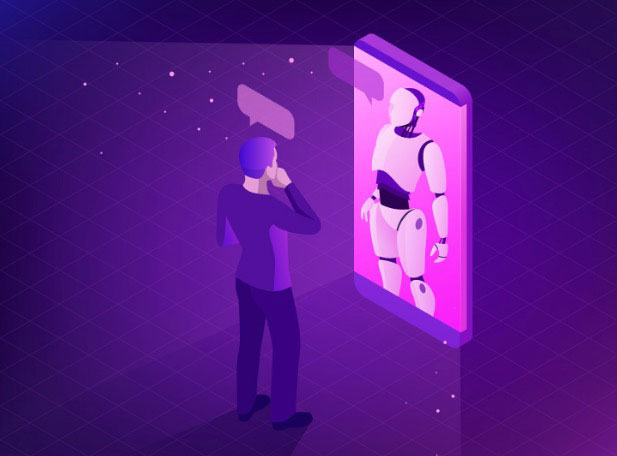It seems that we are witnessing the advent of the age of bots, whether they are conversational, the “chatbots”, or whether they are just publishing predetermined messages, as the “Twitter bots” do. Their multiplication is accompanied by a certain refinement in their method of diffusion as well as in the quality of their message, their “script”. But this is not only due to new technological possibilities, it is above all the human brain that is behind this improvement.
If we are witnessing an increase in the presence of bots of all kinds on the Internet, it would be wrong to think that they are becoming more intelligent, more efficient, or that they are multiplying just by themselves, like viruses. Indeed, bots are computer programs, sequences of commands and orders to be carried out, which are written by human operators. Their quality is determined by the quality of their conception. Therefore it depends on the quality of the human mind behind it.
Nor are bots a novelty allowed by a new technological development. For example, for chatbots, we have been able to automate conversations for a long time. A basic chatbot can be written in a few lines of code, just make it say “The weather is fine today, isn’t it?” and give it different answers depending on whether the other speaker says “Yes”, “No”, or something else.
A Two-step Development
What causes the development of chatbots, in reality, are two things: the development of the “messaging” approach in our interactions, both in the personal and professional spheres, as well as the enthusiasm generated by this new, automated form of communication among advertisers, sales representatives and other communicators to address potential customers.
At first, the explosion of social networks meant that communications were increasingly done via instant messaging (WhatsApp, Facebook Messenger, Skype…) rather than the traditional mail, email and text messages. With the possibility for companies to have a public profile on these same social networks, it has become interesting to look at the possibilities provided by this new hegemonic mode of communication.
In a second phase, the creative minds of the vast world of communication were able to put their brains and imaginations into action to invent and exploit the possibilities of this new field, chatbots. After developing simple models, new demands were formulated: more dynamism, more adaptability to the user… So, technologies such as Natural Language Processing (NLP) were implemented in chatbots. Latest to date, voice synthesis or “Text-to-Speech” is an additional asset to make a chatbot stand out.
Great powers come with great responsibilities
As the intelligence, energy and resources invested in chatbots increase, so do the issues surrounding them. Political propaganda bots have appeared by the thousands or even millions on Twitter, especially during the US presidential campaigns. They can be used by propagandists, therefore, but also by extremists, to spread their messages to a wider audience in two ways: by heavy repetition, as well as by normalization, giving the impression that their opinion is shared by a large number of people.
But if chatbots can be used for political purposes, it is also, and mainly, a tool for business and public communication within everyone’s reach. The chatbots are becoming more democratic, as their power is becoming accessible to all. Online platforms allow you to create, customize and distribute your own chatbots on the Internet and social media. And you can do this without writing a single line of code and without having to manage them yourself, since chatbots are hosted in the cloud. Some are even free, while providing state-of-the-art technologies, as is the case with SnatchBot.me.
You can therefore also exercise your intelligence and creativity on chatbots, to make them playful and welcoming to your interlocutors, and provide them with a more satisfying communication experience, thus better reaching them. You can also take advantage of the intelligence provided by the tools implemented in chatbots, such as context understanding and recognition of the user’s emotions.
Use them, without limits! In an ultra-connected world, online communication is the backbone of business. And a chatbot broadcast on a multitude of platforms does the work of 5 community managers, and this, without supervision. So chatbots are destined to become the new privileged form of communication, both political and commercial, but also associative and artistic. It would be a mistake not to take advantage of it, wouldn’t it?
